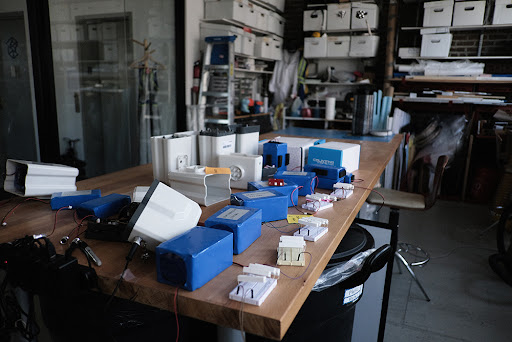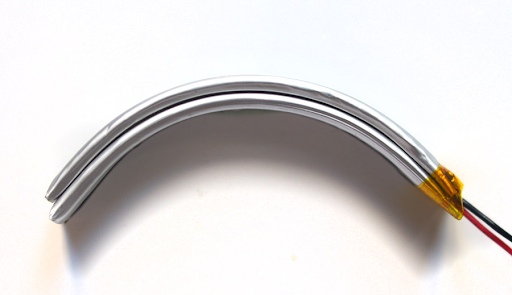
Introduction
For product designers and electrical engineers, general knowledge of batteries is important to maintain since batteries are found in so many products used these days. This article offers a quick deep dive into 5 novel lithium battery chemistries.
As a raw material, lithium can be used in ceramics, greases and pharmaceuticals, but it’s best known as the material in batteries for cellphones, laptops and EVs. Rechargeable batteries take advantage of lithium’s light weight (it’s the lightest of all metals) and its high electrochemical potential.
While lithium can be ‘farmed’ through brine harvesting, it is also naturally occurring near salt lakes, volcanoes, and craters. In September 2023, a massive deposit of lithium was discovered at the McDermitt Caldera crater along the Nevada-Oregon border. This natural deposit of lithium is estimated to hold between 20 million and 40 million metric tons of lithium. That’s enough lithium to satisfy the needs of 2 to 4 billion electric cars! While some may see this as a nerdy news headline, others may realize the potential to significantly shift Americans away from fossil fuels and/or develop new kinds of battery operated products.
The most popular rechargeable battery chemistry is Lithium Polymer (LiPo). LiPo batteries are sold in cylindrical cells known as 18650 or 21700, or prismatic silver pouches like those found in phones and laptops and most gadgets. Prismatic LiPo batteries can be made in almost any shape or size, including curved form factors for wearables. In fact, at Tomorrow Lab, we’ve used curved lipo batteries in products like the QBracelet.


While LiPo has been the standard for years, there are a number of novel lithium-based battery chemistries for use in industrial and commercial products that offer interesting benefits. Below is a brief review of those less popular lithium battery chemistries:
1. Solid-State Lithium-Ion (SS Li-ion)
Solid-state lithium-ion batteries use a solid electrolyte instead of a liquid or gel electrolyte “polymer“ found in traditional lithium-ion batteries. They offer the potential for higher energy density, improved safety, and a wider operating temperature range as compared to traditional lithium-ion chemistries.
However, Solid-State Lithium-Ion does not have a high cycle life and will start to lose capacity after approximately 500 charge cycles. Solid-State Lithium-Ion batteries also have a lower discharge rate than lithium ion cells making them more appropriate for products with lower power demands — you wouldn’t want to use these in electric vehicles.
2. Lithium-Iron-Phosphate (LiFePO4)
While not entirely new, lithium iron phosphate batteries have gained attention for their improved safety, long cycle life, and thermal stability compared to other lithium-ion chemistries. They are used in electric vehicles, energy storage systems, and other applications that require long shelf life. Lithium-Iron-Phosphate batteries support a relatively high amount of charge cycles before degrading in capacity; over 7000 charge cycles, which is 10x longer that standard lithium-ion at 700 cycles.
3. Lithium-Titanate (Li-Titanate)
Lithium-titanate batteries use lithium titanate as the anode material, offering high power capabilities, long cycle life, excellent thermal stability, and ultra fast charging. They are used in applications where fast charging and high-power discharge are essential, such as electric buses and certain energy storage applications.
Lithium titanate batteries support over 10,000 charge cycles before degrading in capacity making them almost unmatched in that regard. By comparison, Lithium Polymer batteries start to lose capacity after only 700 charge cycles. Compared to Lithium Polymer, Lithium-Titanate batteries are only about 20% less energy dense than Lithium-Polymer.
4. Lithium-Sulfur (Li-S)
Lithium-sulfur batteries utilize a lithium anode and a sulfur cathode. They have the potential to be extremely low cost with extremely high specific energy density compared to traditional lithium-ion batteries, making them attractive for applications like electric vehicles and renewable energy storage.
The low atomic weight of lithium and moderate atomic weight of sulfur means that Li–S batteries are relatively light weight.
5. Lithium-Air (Li-Air)
Lithium-air batteries use oxygen from the air as the cathode material, potentially offering much higher energy density than current lithium-ion batteries. The energy density of lithium-air batteries is nearly four times better than lithium-ion batteries.
Pairing lithium and ambient oxygen can theoretically lead to electrochemical cells with the highest possible specific energy. However, there are still significant technical challenges to overcome before commercialization.

Leave a Reply